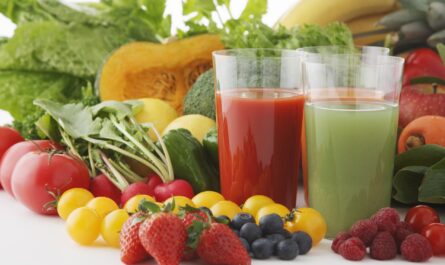The Complex Chemistry of Flavor
One of the most complex sensations our taste buds can perceive is flavor. While taste refers solely to the basic tastes of sweet, sour, salty, bitter and umami, flavor is a much more sophisticated experience that incorporates taste, aroma, texture and temperature. Behind every delicious bite of food is an intricate interplay of chemical compounds that stimulate our senses to give us the full flavor experience.
Thousands of volatile organic compounds known as aroma molecules are responsible for the flavors we detect in food. When we chew and swallow, these molecules are released from foods and travel up through the mouth and nose to interact with odor receptors in our nasal cavity. This allows us to perceive aromas even while eating. Different volatile compounds have boiling points between 130-265°C, enabling them to become airborne and reach our nose. Without the ability to smell these airborne aroma molecules through retronasal olfaction, we would only experience the basic tastes in food and it would be much less satisfying.
Many volatile aroma compounds are also responsible for Food Flavor detected on the tongue. Substances like sugars, amino acids, lipids and vitamins impart both taste and aromatic qualities. Food scientists have identified thousands of compounds that can influence flavor, with some foods containing over 100 significant odor-active compounds. The complex interplay between these molecules allows us to distinguish subtle nuances between similar foods. Even small differences in compound amounts or ratios can drastically change our flavor perception.
The Role of Biochemistry in Developing Food Flavor
At the most fundamental level, flavors develop due to basic biochemical reactions that occur when raw ingredients are transformed through cooking methods like baking, frying or slow roasting. Enzymes, pH levels, amino acids and sugars all interact to generate new volatile compounds and intensify pre-existing ones.
For example, the Maillard reaction is one of the most influential flavor-forming processes. Occurring when amino acids and sugars are heated together above 150°C, it produces hundreds of nitrogen-containing heterocyclic aromas along with pigments like melanoidins. This non-enzymatic browning lends roasted, nutty, caramelized and crusty flavors to foods as diverse as bread, beef and coffee.
Fermentation, used to make foods like cheese, wine and kimchi, allows beneficial microbes to break down compounds through their metabolic enzymes. Food Flavor Yeast fermentation produces ethanol and carbon dioxide, while lactic acid bacteria give sour tastes and buttery diacetyl. Proteolytic enzymes in aged cheeses selectively break down proteins into smaller amino acids and peptides that contribute savory umami and meaty tastes.
Even just chopping or blending ingredients mechanically disrupts plant and microbial cell membranes. This releases volatile flavors sequestered inside, activating our sensory perception. The increased surface area from chopping also allows more efficient volatile loss during cooking. Overall, virtually any transformation of raw food materials influences flavor through changes in biochemical makeup.
Other External Factors That Affect Flavor
Beyond the intrinsic biochemical components of food itself, several external ambient conditions also shape our perceptions of flavor.
Temperature plays a key role – both the serving temperature and our own body heat. As foods warm up, volatile compounds evaporate more readily for our noses to detect. But if too hot, it can overwhelm our receptors. Meanwhile, our skin temperature of 33°C is optimal for releasing volatiles from foods into the nasal cavity.
Humidity levels impact the behavior of aroma molecules, with higher moisture allowing for improved vapor solubility and slower rise. Dry air may result in faster, more fleeting vaporization of volatiles. Atmospheric pressure influences boiling points as well.
Our health, environment and psychological state also subtly alter flavor perception through influences on olfaction and gustation. Common colds, allergies, smoking, stress and even menopause can impair sensitivity. Meanwhile, expectations, learned associations and presentation beautifully affect the mind’s interpretation.
In summary, flavor arises from a delicate balance of smell, taste, touch and more. A comprehensive understanding of the complex biochemistry and physics involved helps elucidate how raw ingredients are transformed into the delicious sensations we enjoy. With further research, this knowledge may even allow for crafting healthier or novel food experiences.
Controlling Flavor Through Cooking Techniques
Now that we understand the origin of food flavor on a molecular level, we can purposefully control and finesse flavors through specific preparation methods. Cooking doesn’t just make food safe – it unleashes delicious flavors through chemical transformations.
Roasting, whether in the oven or over an open fire, relies on the Maillard reaction and caramelization to intensify flavors. Meats, vegetables and even some fruits benefit from high dry heat, browning exteriors while retaining moisture inside. The oxidation occurring also alters flavors. Roasting coaxes out sweet-savory notes and allows meatier, nuttier nuances to emerge through non-enzymatic reactions between amino acids and sugars.
Frying using oils subjects foods to even higher temperatures up to 190°C while simultaneously infusing them with added lipid flavors. It creates crispy textures through the swift moisture evaporation underneath a barrier of fat. Both shallow and deep frying techniques concentrate the food’s inherent flavors while imparting complexity from browned crunchy edges and fat-soluble compounds lost to the cooking medium.
Fermentation has been used for millennia to develop complex flavors in everything from condiments to cured meats to refreshments. The microbial breakdown of carbohydrates, proteins and fats through controlled decomposition seasons foods with tanginess, carbonation or pungency. It allows preserved consumption of crops past peak harvest times.
Slow techniques like braising, stewing, and barbecuing fully develops flavors through low wet heat over long durations. Tender connective tissues break down, mixing flavors within moisture-rich environments. Aromatic herbs and spices blooming in heat infuse subtle notes when simmered gently.
Properly cooking food awakens natural flavors lying dormant on a molecular level. Understanding each method’s science illuminates how to coax maximum deliciousness from any ingredients through considered preparation.
It has explored how raw ingredients contain thousands of compounds influencing aroma, taste and texture, and how various biochemical transformations through cooking techniques unlock these flavors. A comprehensive grasp of flavor science allows the discerning cook to purposefully develop delicious sensations through balanced preparation methods. Continued research may further optimize flavor, health and sensory enjoyment
*Note:
1. Source: Coherent Market Insights, Public sources, Desk research
2. We have leveraged AI tools to mine information and compile it




